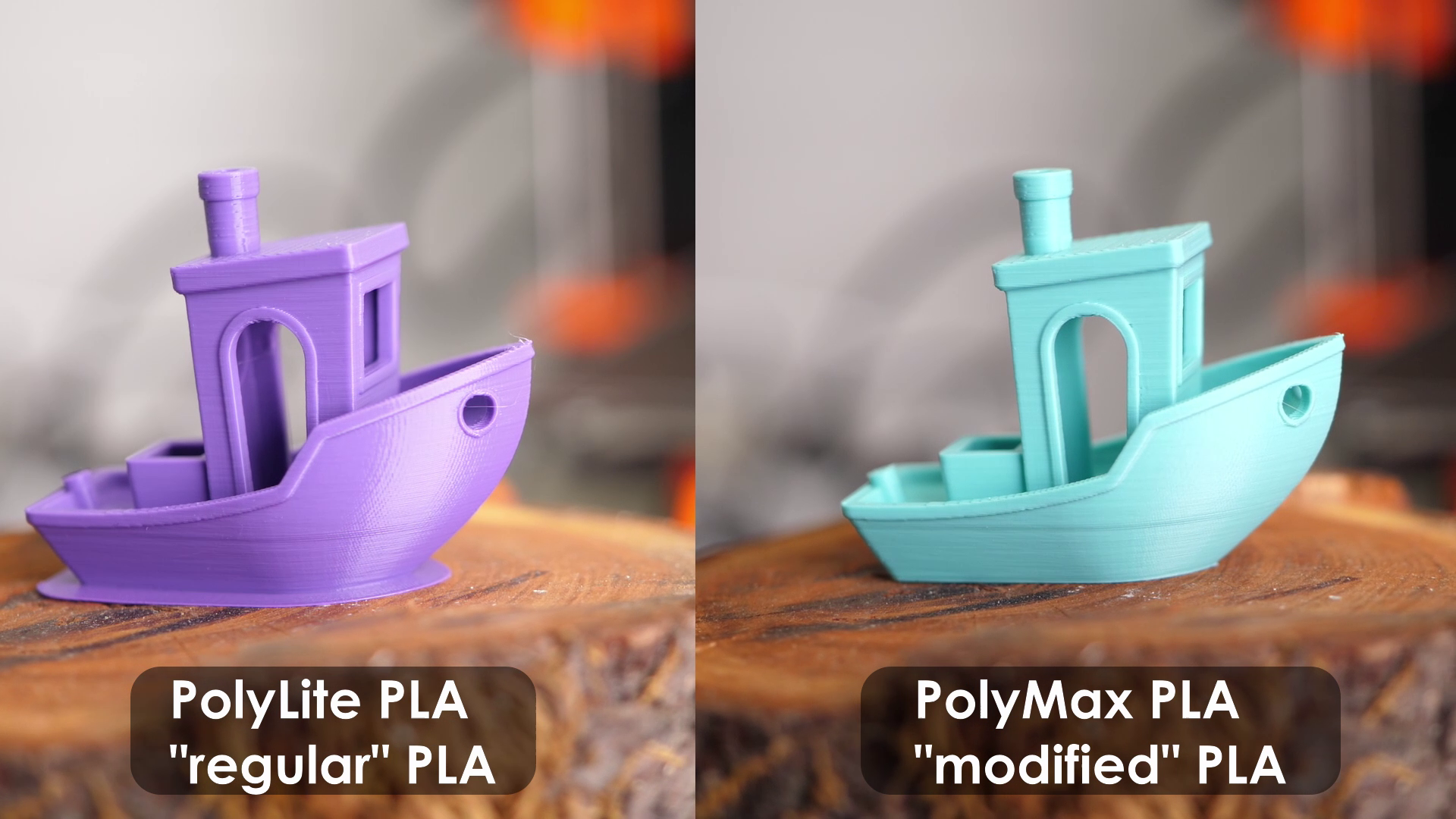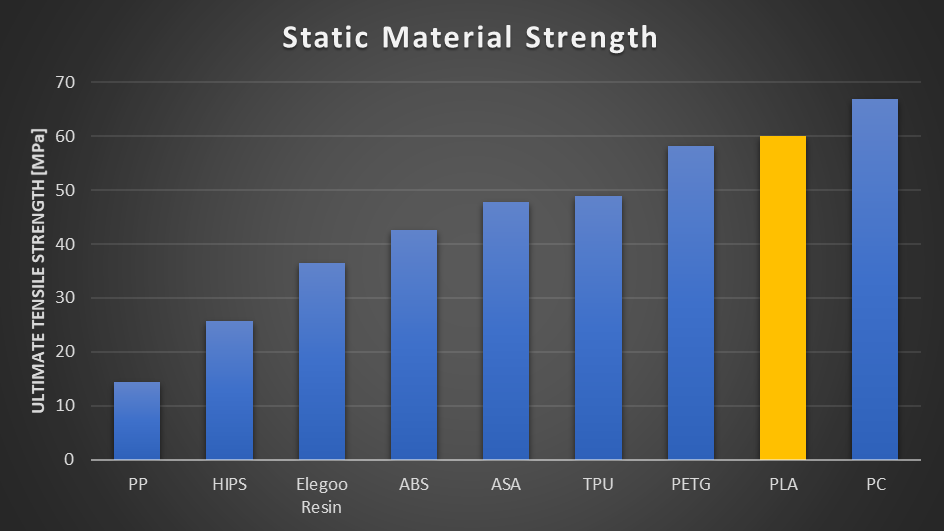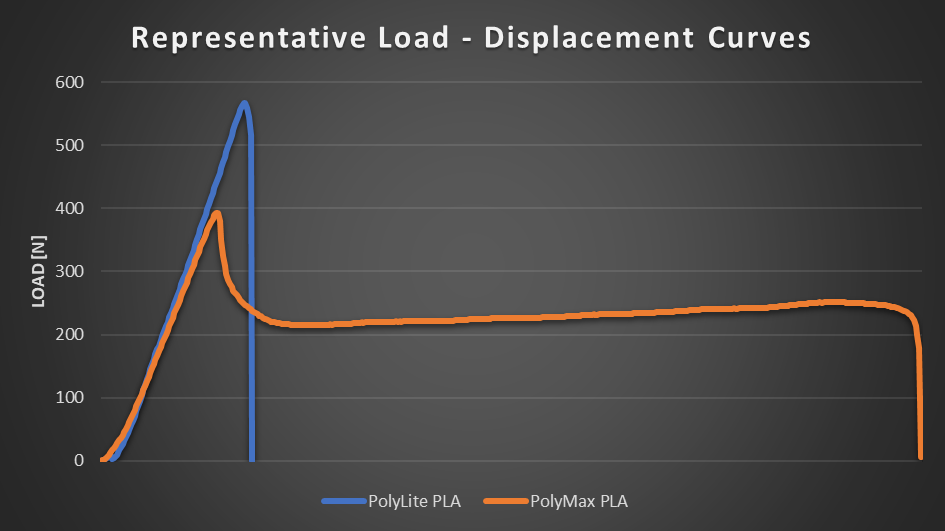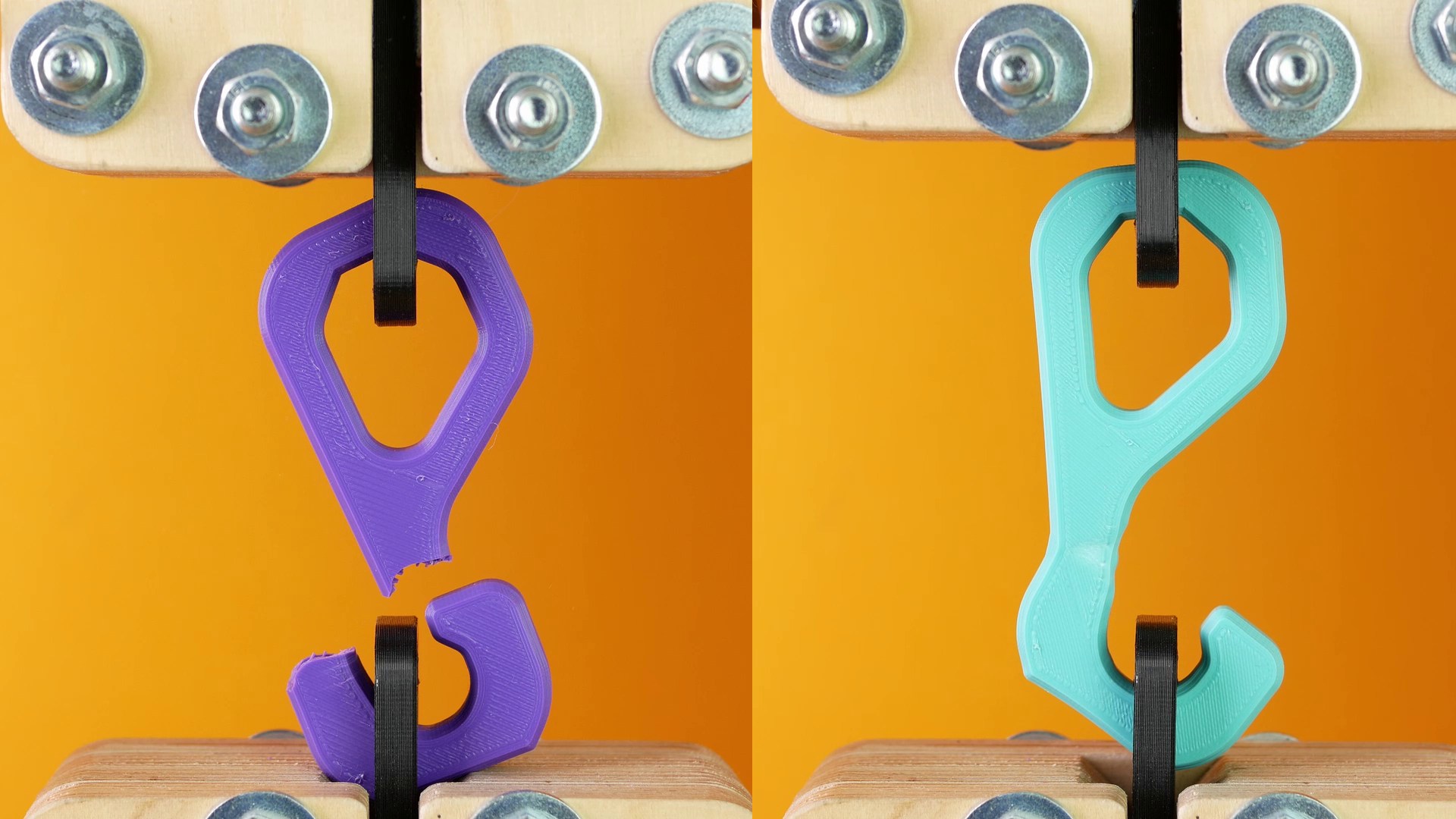The difference of PLA and PLA+ tested! (feat. Polymaker)
Regular PLA is really easy to print and stronger than some might expect, though if a PLA part actually fails, it shatters quite violently. During the last years, many companies brought modified PLA filaments onto the market that claim to improve on the downsides, up to the point that some even call their modified PLA “Eco ABS”. Have you ever used a modified PLA and how was your experience? Let’s discuss down in the comments! There is not one PLA Plus or Tough PLA, so I can’t compare all of them, but I received a roll of Polymakers PolyLite PLA, which I call a regular “PLA” and a roll of their “PolyMax PLA” with is the modified version which I’ll use to represent PLA Plus. I thought this is a great opportunity to finally compare the two materials. The results will not match 100% with any other brand, but we’ll see really clear trends.
There are several ways to toughen up a PLA base resin, and every manufacturer probably adds their own 11 herbs and spices. In general, most of the time, additives and modifiers are added and the materials also often get compounded, so mixed with other materials like Elastomers to dial in the properties. The Safety Data Sheets that manufacturers should provide can sometimes give us a slight idea of what’s going on and the PolyMax PLA for example contains a significant amount of “Acrylic Polymers”. In contrast, the standard PolyLite PLA is basically only PLA with only a minor amount of additives.
Let’s first take a look at the price because manufacturers do usually charge quite a bit extra for the modified material. Polymakers PolyLite PLA is decently priced at $30 per kilo, whereas the PolyMax variant is almost $45 for a roll of only 750g. That results in double the price and, in the end, $60 per kilo. I checked some other brands and also there the markup is between 5-40%. So let’s next, try to find out if it’s worth paying the extra charge for what we’re getting!
Different filament prices compared
First, I printed a bunch of quality test parts to see if the print results differ. I dried both spools after I took them out of the box to not run into trouble with moisture in the material. I removed 0.16% and 0.23% of moisture, which is not a lot, and I don’t think that any of the spools took up a considerable amount of water while packed. Both printed without a problem, though in later prints, I’ve seen a little more warping on regular PLA parts, where the modified PLA parts printed and stuck flawlessly. The higher modified PLAs often include additives that help with build plate adhesion and reduce warping, so it might sometimes be easier to print, especially for big, warp-prone parts. The nozzle temperature was set to 215°C for both materials, though some other Tough PLAs might need to be printed a little hotter. With the first prints, I checked overhang performance, stringing, and small details, as well as bridging. The regular PLA showed a bit more stringing, which was a little surprising to me, because I rather had this problem with other PLA Plus spools in the past. Still, both materials were able to reproduce the really fine tips of the spikes. Bridging performance was basically the same for both, and even the 70mm gap still looked great! Overhang performance was slightly better with the regular PolyLite PLA. The 65° overhang of the PolyMax PLA part already looked a bit rough, whereas it still looked okay with the other filament. The 3DBenchy confirmed the findings, and I was only able to spot some more strings on the PolyLite PLA part. Another thing I noticed with Polymakers materials and also with other brands is that standard PLA usually results in a glossy print, the modified version often is a bit more matte. All in all, the printing performance of both of the materials is very similar, and you should expect the same when switching from a normal PLA to a PLA+.
Let’s now take a look at the mechanical performance that I checked with my mini tensile test specimens, a bending bar for stiffness evaluation, as well as my usual test hook and impact test samples.Let’s first take a look at the tensile strength and layer adhesion. Many are not aware that in terms of static strength, PLA is still one of the strongest materials that you can print on a home machine, with basically only PC that beats it.
Static strength of different 3D printing materials
This is also confirmed by my tensile specimens. The PolyLite samples that were printed lying were able to bear 57MPa of stress but did fail quite abruptly and violently. The layer adhesion samples also performed remarkably good with a maximum strength of 43MPa, which is still 75% of the regular strength. Most other materials usually show at least a 50% knock-down factor. This is definitely something I have to praise Polymaker for because even though the PolyLite material is affordable and not hugely modified, it is a solid filament. Now it becomes interesting because the PolyMax PLA, and similarly other modified PLAs, was not as strong as the regular stuff. The lying samples failed at 43MPa on average, which is significantly weaker than the normal PLA.
Static Strength Test Results
But why do then all the modified PLAs claim that they are stronger? Well, if we take a look at how the samples fail, we see a remarkable difference. The Polymax PLA deforms and yields a huge amount, before it fails, the PolyLite PLA just snaps without warning. So even though during slow loading, normal PLA is stronger, most real-world load cases are at least a bit dynamic. At loading scenarios where regular PLA will simply snap and fail, the modified materials yields, taking up energy and redistributes the loads and, therefore might be more tough! Layer adhesion for PolyMax PLA, by the way, was similarly good as before and the samples were able to bear a remarkable 75% of the load compared to the ideally printed ones.
Representative Load - Displacement curve of 3D printed coupons
Since the parts, only from handling felt a little different, I also tested them for stiffness using a 3-point-bending rig. So I loaded printed bars with increasing weights and recorded the deformation. It was clearly visible that the modified PLA deformed more under the same weight as regular PLA. In numbers, PolyLite PLA had a bending modulus of 3000MPa, PolyMax only of 2200MPa. This also means that the modified PLAs can sometimes be only as stiff as PETG or ABS which have their bending modulus, both also around 2000MPa. So keep that in mind.
Stiffness Comparison
Next, I tested my usual test hooks because those show a bit more realistic loading scenario than just the axial tensile test bars. Different to the other samples, the hooks were not printed fully dense but with three perimeters and 30% infill. Since we again load the parts slowly in a quasi-static manner, the PolyLite hook was significantly stronger and broke at 72kg. The one that I printed standing failed at 44kg. The PolyMax hook failed already at 48kg, the one that I printed standing at only 34kg. Again we see the massive difference in failure mode because the regular PLA just snapped, but the modified version absorbed a lot of energy by yielding and didn’t even break in the end.
PolyLite PLA snaps (left), PolyMax PLA yields (right)
Let’s now take a look at impact strength, so the resistance of a material against a short load-impulse, for example, if you drop a part. The PolyLite samples were, on average, able to absorb 5kJ/m² and just snapped right through. PolyMax was around four times tougher and mostly didn’t break through. The two halves were often still held together by a small bit of material after the test.
Impact Test Results
At last, let’s answer the question if the modified PLA behaves better in terms of temperature resistance, so if claims like “Eco ABS” hold true in that regard. For this investigation, I put two test bars, loaded with weights in the middle, into my kitchen oven and increase the temperature gradually while monitoring it with a thermocouple. The bars quickly became soft, and you are definitely not able to use them anymore at over 60°C. At 65°C both failed just at the same time. So for the Polymaker material, the modified PLA is no more temperature resistant than the simple PolyLite PLA, and that’s also probably true for most other PLA + or Tough PLAs. Though I have to say, that there might be some modified PLAs around, where crystallization modifiers or other co-polymers improve this property.
Both materials failing at the same time (or temperature)
All right, what’s the verdict after all of these tests. What distinguishes a PLA Plus from a regular PLA? It’s usually and sometimes also understandably more expensive. Temperature resistance and also print quality is mostly the same. Printability, for example, with Polymakers PolyMax PLA is definitely improved due to less warping. Static strength is not higher, and also the material stiffness can be significantly lower. Where the modified PLA shines is the impact behavior because here they are usually way tougher than their unmodified counterparts, and this also shows in the failure modes. Tough PLA breaks way more predictably because it will significantly deform before it snaps, making it more suitable for some technical applications. Though with all these results, we should ask ourselves, if PETG might be a good and cheaper substitute to PLA Plus, because it also has higher impact resistance, yields more and even is more temperature resistant. But what do you think?









